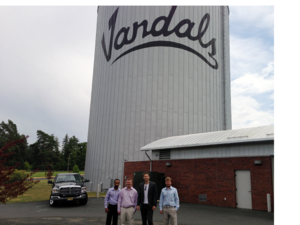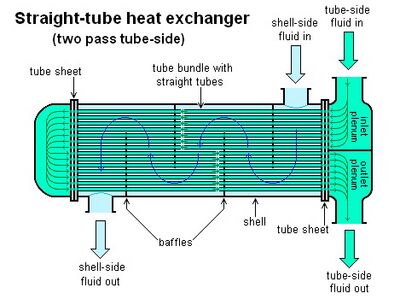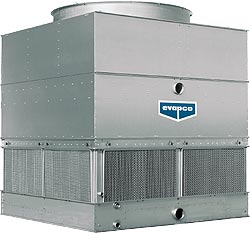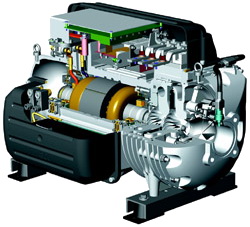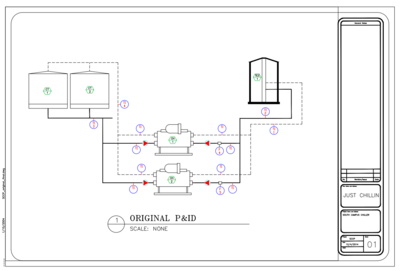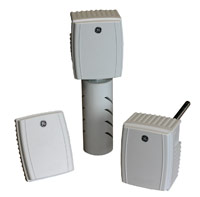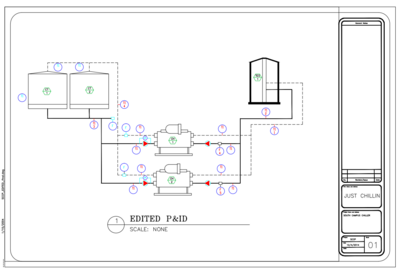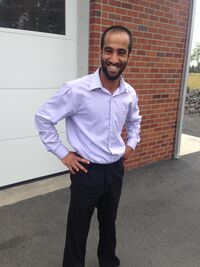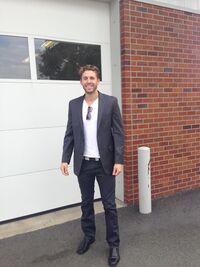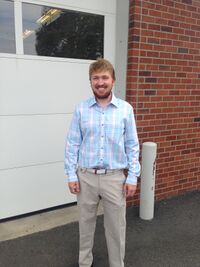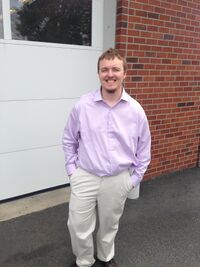South Campus Chiller
| U of I Chiller system | |
| Sponsors |
|
| Team Name | Just Chillin' |
| Duration | Summer 2014 - Fall 2014 |
| Faculty Advisers | |
| Mentor |
|
| Client |
|
| Team Members |
|
The UI South Campus Chiller Plant is responsible for producing & delivering chilled water to UI facilities. The purpose of this projects was to (1) develop and validate a working math model for this system, (2) inventory existing instrumentation and specify additional instrumentation for complete system characterization, and (3) demonstrate how to use the system model along with available data to study different operating conditions.
Background
The South Campus Chiller Plant (SCCP) is a plant that removes heat from water via absorption refrigeration cycle. The chilled water is then circulated through heat exchangers to cool university of Idaho's equipment as required. The SCCP uses cooling towers to take the heat out of the water being sent out to campus. The cooling towers work by misting the warm water down through air. The amount of heat being pulled out of the water being misted down is affected by ambient temperature.
Components of the cycle
| Items | Description |
|---|---|
|
Pumps are located on both the primary and secondary loops of the chilling plant. There are 40 HP and 100 HP pumps, where the 40 HP pumps are located on secondary loop and the 100 HP pumps are located on the primary loop. | |
|
A shell and tube evaporator is a heat exchanger that transfers heat where cold refrigerant flows over the tubes in a shell. When heat is transferred from the water to the chillers refrigerant that means a refrigerant evaporates changes into vapor inside the tubes and resulting vapor is drawn into the compressor. | |
|
Two Evapco cooling towers are in use to reject the heat to atmosphere. This is done by misting hot water down over cool ambient air to reject the heat gained from the refrigerant in the SMARDT chillers. | |
|
Compressor is one of The main component in a chiller system,we use the compressor when we would like to increase the pressure and temperature of the refrigerant vapor. This is a Frictionless Centrifugal compressor which has capacities range from 60 to 300 ton per a compressor and there are four compressors per a chiller. | |
|
It is a compression cycle where R134 passed through four main components: the compressor,the evaporator,the condenser and an expansion valve. where the evaporator is a cooling side of the system which has low temperature and the condenser is a heating side of the the system which has high temperature. | |
|
The thermal energy storage tank is used to store chilled water being produced by the south campus chiller plant. It is a 2,000,000 gallon storage tank with thermalcline keeping the hot and cold water separated. The hot water stays on the bottom of the tank while the cold water is on top. |
Problem Definition
The UI campus uses the chiller plant to provide cooling by using the SCCP as a central generator for chilled water which is then piped throughout the buildings to air handling units. The piped water then serves individual tenant spaces, single floors, or several floors. The campus chiller has multiple benefits such as greater energy efficiency, better controllability, and longer life. It is also efficient in terms of space utilization within the building because multiple components don't need to be in the same space. Throughout the year, our team worked on improving the quality, productivity and efficiency of the SCCP. This was done through various methods of data collection and analysis. The data collected from the SCCP's current operating conditions suggest some areas of inefficiencies, leading to unnecessary operating costs.
Instrumentation
|
This is a simplified P&ID of what we were given. Instruments surrounding the Thermal Energy Storage tank and SMARDT chillers allowed us to model these sections in EES without any added instrumentation. |
Instrumentation Added to Cycle
| Items | Description |
|---|---|
|
A total of three flow meters will be used for tracking the supply and return flow rates of chilled water to and from the cooling towers. Two flow meters have been installed inside the SCCP on each of the chiller’s discharge lines to the condenser cooling tower. The third flow meter is located outside on the SCCP on the condensers return line to the chiller.
| |
|
A total of two pressure transducers are used on each of the pumps. Each of these transmitters will measure the gauge pressure of the chiller’s discharge lines out to the condenser cooling tower. | |
|
Three temperature transmitters have been installed and positioned atop each fan to record the Wet-Bulb and Enthalpy of the air leaving the condensing tower. The third transmitter is placed on the side of the cooling tower, and used for recording the ambient temperature. |
Updated P&ID
|
From the existing P&ID we were able to make additions to the existing instrumentation, which is shown here. We added two flow meters, activated an existing flow meter, two pressure transducers, and three temperature/enthalpy sensors. This added instrumentation allowed us to have a fully defined thermodynamic cycle, which made it capable to produce a math model. |
Data analysis
The data that we collected using the existing and added instrumentation was given to us in .csv format. This data is collected in ATS from each instrument in individual files. We took those individual files and combined them into an single excel file. Once everything was combined we were able to use conditional formatting to find alarm data and the operating stages of the plant. From this data we were able to input it into our EES model to produce graphs and get correlations in between our math model predictions and the actual running of the plant.
Cycle Modeling
The figure above shows the thermodynamic cycle including all of the state points that we were able to develop using the P&ID's and general plant layout. We input the cycle into EES and were able to create a math model. This math model was comprised of a Fist Law and steady state analysis. Loop 1 of the model consists of the water flowing from the Cooling Towers to the chillers. Loop 2 deals with the vapor compression cycle used by the chillers, with the working fluid being R-134a. Loop 3 is where the cooling of the HVAC water takes place.
Team Members
| Ali Almater:
Major: BS in Mechanical Engineering | |
| Patrick Frome:
Major: BS in Mechanical Engineering | |
| Darvin Thornton:
Major: BS in Mechanical Engineering | |
| Christopher Thilmony:
Major: BS in Mechanical Engineering
|
